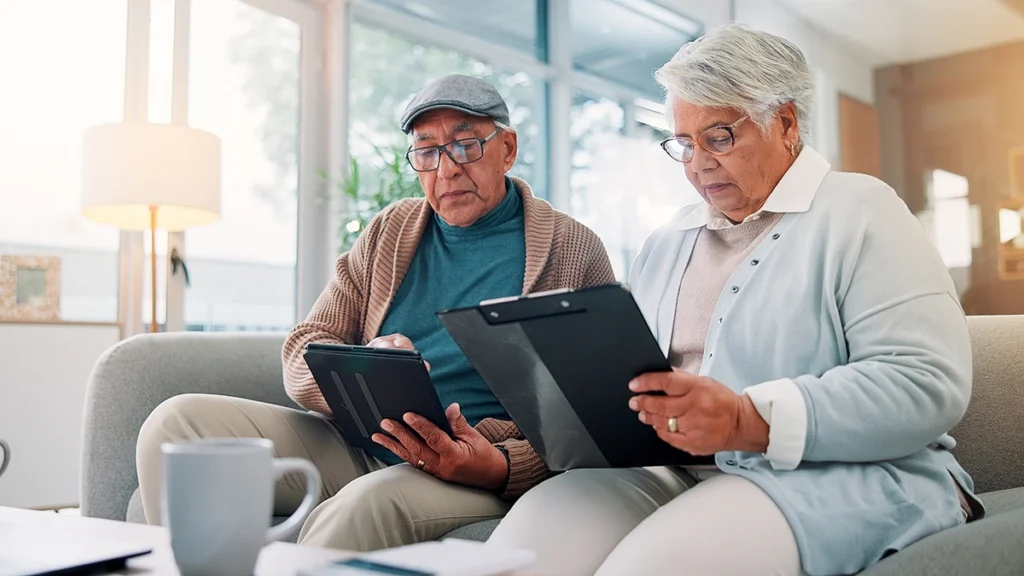Home is more than walls and a roof. It is where laughter fills the rooms, memories are made, and your family feels safe. For many homeowners, protecting that sense of security means making sure the home stays in the right hands long after they are gone.
Planning does not have to be complicated.
With a few clear steps, you can protect your home, avoid legal confusion, and give your loved ones lasting peace of mind. In the end, safeguarding your home is part of safeguarding your family’s legacy.
Step 1: Understand the Risks of Probate
Probate is the court process of transferring property after someone passes away. It may sound routine, but probate is often expensive, time-consuming, and stressful for families. Court fees, attorney costs, and delays can consume resources that could have been preserved.
For many, it also creates emotional strain, since loved ones must navigate legal proceedings during a difficult time. By understanding what probate is and why it matters, homeowners can begin planning to avoid it.
Probate also limits flexibility. Even if a homeowner leaves clear instructions in a will, the will must be validated by the court, which means months of waiting. Families may not have immediate access to the property, which can delay sales, refinancing, or even the ability to live in the home without legal barriers.
Many families find this process frustrating, especially when all they want is to follow their loved one’s wishes.
Another often-overlooked risk is that probate makes private family matters public. Court filings can become part of the public record, meaning anyone can view details about a family’s assets. For many families who value privacy, this exposure adds another reason to avoid probate whenever possible.
Step 2: Learn How a Lady Bird Deed Works
A Lady Bird Deed is a legal document that allows a homeowner to transfer their property to chosen beneficiaries automatically upon death, without going through probate.
Unlike a traditional life estate, it preserves full control during the owner’s lifetime. That means the homeowner can sell, refinance, or change beneficiaries without needing anyone else’s permission.
This flexibility is why many families consider it one of the strongest tools in estate planning.
When properly executed, a Lady Bird Deed overrides a will for that property. Even if the will says something different, the deed controls the outcome.
This certainty reduces confusion and legal conflict, making transitions smoother. It’s important to note, however, that Lady Bird Deeds are only recognized in six states: Florida, Texas, Michigan, West Virginia, Vermont, and North Carolina. In these states, they have become a trusted way to simplify inheritance while avoiding unnecessary costs.
For example, many homeowners over 55 choose this approach because it balances independence with peace of mind. A 67-year-old in Florida might want her son to inherit the home but still worry about needing to refinance for medical expenses. By recording a Lady Bird Deed, she guarantees her son’s inheritance while keeping the option to refinance.
When she later passes away, her son files a death certificate, and ownership updates instantly. No court, no conflict, just a simple and secure transition. Families who have gone through probate without this tool often describe the contrast as night and day.
Defining Key Terms
- Probate: Court-supervised process of validating a will and distributing property.
- Life Estate: Legal arrangement where a person holds property during their lifetime but often loses flexibility.
- Lady Bird Deed: An Enhanced Life Estate Deed that gives the homeowner full lifetime control and avoids probate at death.
Step 3: Record and Preserve Your Deed
Once a homeowner decides to use a Lady Bird Deed, the next step is making sure it’s executed and recorded correctly. The deed must follow state-specific laws and be filed with the county recorder. A document-preparation service helps ensure the deed is legally sound and meets all requirements. Without proper recording, the deed may not be valid, which can leave families exposed to probate after all.
Preserving the deed is just as important as recording it. Homeowners should keep certified copies of their important documents and inform their beneficiaries about their existence.
While the deed makes inheritance automatic, clear communication prevents confusion later. Families often find comfort knowing the process is simple and requires only a death certificate to finalize ownership transfer.
In addition, families should periodically review their estate plan to confirm the Lady Bird Deed still reflects their wishes. Life changes such as marriage, divorce, or the birth of grandchildren may inspire a homeowner to update their beneficiary designations. The flexibility of this deed makes such changes possible without legal battles, but regular review is key.
Why These Steps Matter
Each step builds on the other. By understanding probate, homeowners see the risks of doing nothing. By learning how a Lady Bird Deed works, they recognize an option that combines control and protection. By recording and preserving the deed, they guarantee that protection will take effect when it matters most. Together, these three steps create a plan that is both simple and powerful.
Beyond the legal mechanics, these steps matter because they protect families. Inheritance disputes often arise not from malice but from confusion. Clear documents prevent conflict and ensure loved ones remember the person, not the paperwork. For many, avoiding probate is about more than saving money—it is about giving peace of mind to both the homeowner and the family they leave behind.
It is also worth noting that many families who go through probate for other assets often say the experience motivates them to prepare better for their real estate. Real property, being the most valuable asset in many households, benefits most from probate avoidance. The Lady Bird Deed is often the missing piece that turns an uncertain plan into a clear legacy.
Comparing Lady Bird Deeds to Other Options
It helps to compare a Lady Bird Deed to other estate-planning tools. A traditional will may outline intentions but cannot bypass probate. A traditional life estate avoids probate but locks the homeowner into choices that can’t easily be changed.
A trust can offer flexibility and probate avoidance, but may be more complex and costly to create. For many families, the Lady Bird Deed offers the right balance of simplicity, control, and legal protection.
Lady Bird Deed vs. Will
Wills are common, but they only go into effect after probate. A Lady Bird Deed, once recorded, ensures automatic transfer without court oversight. For property inheritance, this makes a critical difference.
A Will can also be contested, which adds time and cost to the process. A Lady Bird Deed avoids this uncertainty by taking effect immediately upon the homeowner’s passing.
Lady Bird Deed vs. Trust
Trusts can manage many assets beyond real estate, but they often require more setup, ongoing management, and sometimes higher costs. A Lady Bird Deed is a focused tool for property, offering a streamlined approach for homeowners who primarily want to protect their home.
For families without large investment portfolios, it may provide the most efficient solution without unnecessary complexity.
Lady Bird Deed vs. Traditional Life Estate
A traditional life estate avoids probate but restricts flexibility. Once created, the homeowner cannot refinance, sell, or change beneficiaries without consent from those named to inherit.
A Lady Bird Deed keeps that flexibility intact, which is why it has gained popularity in the states that recognize it.
Key Takeaways
- Probate can delay and complicate inheritance, but a Lady Bird Deed avoids it.
- A Lady Bird Deed overrides a will for the property it covers when properly executed.
- This deed is available only in Florida, Texas, Michigan, West Virginia, Vermont, and North Carolina.
- It combines control during life with simple, automatic transfer at death.
- Compared to wills and life estates, it provides a rare mix of flexibility and certainty.



